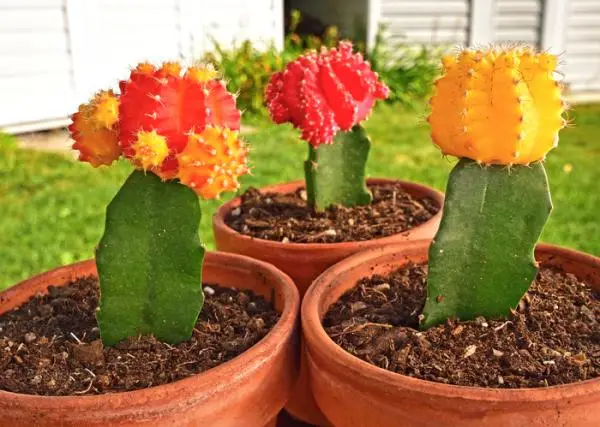You have probably seen at some point, either online or in a florist or specialized store, one of those showy colored cacti grafted onto a base of another cactus. If you want to learn how to make one of those striking grafts yourself and, incidentally, learn more about this type of union between two different species, join us in this article. Next, we offer you a guide to the graft in cactus, how to do it well and its care .
What is a graft and what is it for?
A graft is nothing more than making two plants unite into one. The usual graft consists of two parts: the foot or rootstock , which is the base plant and provides the root (and therefore the feeding function) and the graft , which is the part that will develop thanks to the support of the other.
This, although a priori is simple, cannot be applied with any two plants. The grafts must be compatible with your feet. Usually it will be enough if they are plants of the same family, but in any case if you have doubts, the best thing you can do is check the compatibility of the two species that you intend to graft.
The usefulness of the graft lies, not only in its aesthetic qualities, but in the ability to alter the rhythms and strengths or weaknesses of a plant with certain feet. For example, a slow-growing, complicated-multiplying plant will develop much faster on a fast-growing stem, and therefore it will flower earlier and it will be easier to multiply it and even obtain its fruits or seeds.
Another plant that does not want to stay in direct contact with the ground due to humidity problems, can be grafted on top of a taller one, and thus avoid danger.
And with cacti, there is also the case of the graft of the colored cactus . These beautiful cacti do not have chlorophyll and therefore cannot survive on their own, their only way to survive is through grafting.

How to make a cactus graft – step by step
The first thing to consider is whether the species you are going to graft are compatible with each other. Consult the viability of the graft with a professional or with an online search. Some feet are more beneficial for some species than for others, and your graft should have the best chance of success.
Then you have to take into account the time of year. For the union between the plants to be done correctly, you need them to be in a season of active growth, so the best seasons or times to make cactus grafts are spring and summer .
Also, keep in mind that it is preferable that the diameter of the foot is slightly larger than that of the graft itself, and never the other way around. Finally, it is advisable to water and fertilize the plants more abundantly a week before carrying out the operation. Taking all this into account, you can go on to make a cactus graft with these steps :
- Sterilize the blade you are going to use by soaking it the night before in ethyl alcohol. You can use any type of blade as long as it is as sharp as possible and makes clean cuts.
- Cut the foot of the cactus that will be the base. The cut should be as clean as possible. Once the cut is made, round the edges to prevent shrinkage and wrinkling when healing. You can wrap the cactus in kitchen paper to avoid pricking yourself with its spikes.
- Cut the cactus to be grafted, in this case with a completely straight cut without rounding.
- Place the graft on your foot. It is vital that you do not put it in any way: you must match the vascular bundles of the two plants in the best possible way, make sure that they are cut and coincide in at least two points. They are that point or circle that can be distinguished in its section, and through which the nutrients are transported.
- Finally, hold the joint with plastic wrap or rubber bands that apply light pressure. The graft should be attached in about 10-15 days.

Grafted cactus care
A newly grafted cactus is much weaker and more vulnerable due to the aggressiveness of the process, since it has to heal the wound and, thus, unite the two parts. These are the tips on the care of grafted cacti that we offer you:
- It is important that in those first days they are in an area without direct sunlight and covered with extreme temperatures.
- Once this time has passed, they can be exposed to light, but not throughout the day or during the peak hours.
- Regarding watering, as always in cacti, you should avoid overwatering, trying to give the substrate some moisture when it is very dry.
What to do if a grafted cactus is sick
If one of the two parts of the graft becomes irretrievably diseased, an attempt can be made to undo the graft to save the healthy part. The process is similar but in reverse, and you need to make sure to sterilize the tools.
If the patient is the graft or upper part, you can simply remove it and let the foot close the wound or add another graft in the cut. On the other hand, if the foot is the patient, the graft part will necessarily need a substitute foot . Treat these types of plants with great care and use specific fertilizers before and after changing the graft.

